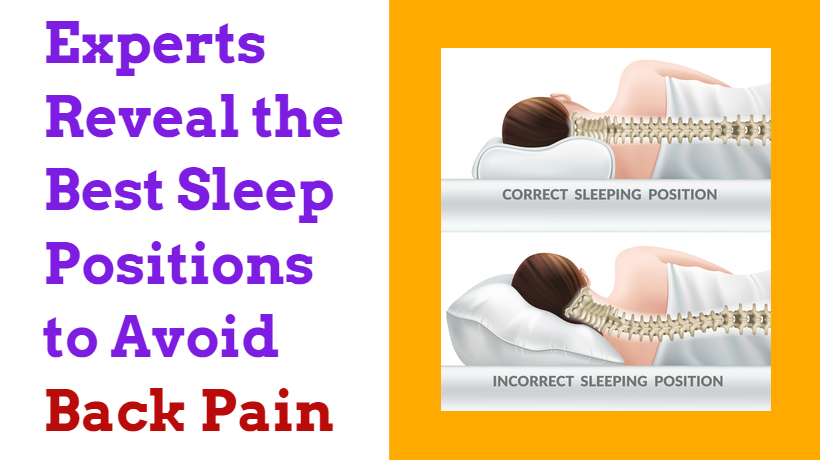Ever wake up in the morning fresh and excited for the day, only to be halted in the middle of your morning stretch by a sharp pain in your back? Yeah, we’ve all been there. Back pain is at its best annoying, and at its worst debilitating, inhibiting you from going about your daily activities.
While many people experience back pain, women and those between the ages of 35 and 55 are most commonly affected. One of the most obvious causes of back pain is an awkward sleeping position. Some sleep positions can put extra strain on the neck, hips, lower back, and more, contributing to the knots and kinks you feel when you wake up.
So, what exactly is the best way to avoid waking up in pain? Here are five sleeping positions you can try to help reduce your risk of back pain.
On your side with a pillow between your knees
For this position, allow your right or left side of your body to make contact with the mattress, and place a pillow between your knees. If there’s a gap between your waist and the mattress, you can add another small pillow there as well. The pillow helps keep your hip, pelvis, and spine in alignment. But make sure you’re not sleeping on the same side every night, as this can lead to problems such as muscle imbalance or even scoliosis.
On your side in the fetal position
This position is especially helpful if you have a herniated disc. Starting on your back, gently roll onto your side and tuck your knees towards your chest, then curl your torso towards your knees. This will help open up the space between the vertebrae in your spine, alleviating pain caused by herniation, or a disc that’s been pushed out of place.
On your stomach with a pillow under your abdomen
Sleeping on your stomach alone can actually make your back pain worse due to added stress on your neck, but if you absolutely have to, adding a pillow can help. You can try placing a pillow under your pelvis and lower abdomen to relieve pressure off your back. If you need to, you can try placing an extra pillow underneath your head as well. This position is good for those with degenerative disc disease, as it relieves stress placed on the space between your discs.
On your back with a pillow under your knees
When it comes to alleviating back pain, it’s clear that the pillow is our best friend. Sleeping on your back is actually one of the best ways to relieve back pain, and adding a pillow can. To start, lie flat on your back and place a pillow underneath your knees while keeping your spine neutral. If you need to, you can place a small, rolled-up towel under the small of your back for extra support. Sleeping on your back will cause less strain on your pressure points by evenly distributing the weight across the widest area of your body. And the pillow will help keep your lower back curved.
On your back in a reclined position
This position may be best for those with isthmic spondylolisthesis, a lumbar spinal condition where a fracture of the isthmus causes one vertebral body to slip over the one below it. Sleeping on your back in a reclined position creates an angle between your thighs and trunk, which reduces pressure on your spine. So if you’re struggling with back pain, investing in a recliner may just help!
Regardless of which you choose, these positions are great ways to reduce your risk of back pain and keep your spine aligned. If you’re still experiencing excessive back pain, talk to your doctor.
Sources:
https://www.mayoclinic.org/diseases-conditions/back-pain/multimedia/sleeping-positions/sls-20076452?s=1
https://www.healthline.com/health/healthy-sleep/best-sleeping-position-for-lower-back-pain#choosing-a-pillow



